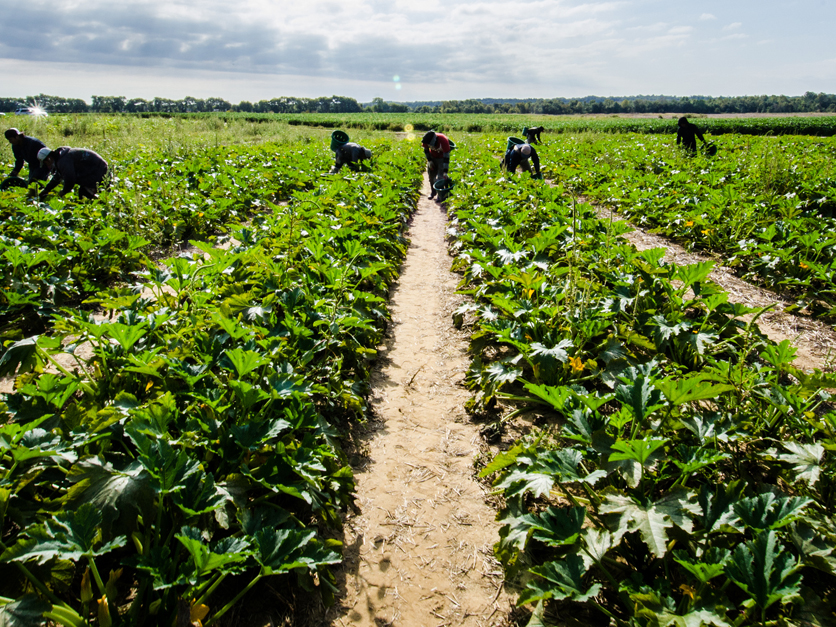(Editor's note: This is the third in our seven-part in-depth editorial series where we look ahead at “Farm & Food 2040.” Part three looks at how the failure to pass meaningful immigration reform is fueling adoption of the newest technologies in automation—primarily robotics—to stem the need for immigrant farmworkers. And we also feature new research identifying the "Farmer of the Future.")
As attempts by Congress to pass meaningful immigration reform repeatedly fail, those in agriculture are steadily moving forward in a race to develop and adopt the newest technologies in automation—primarily robotics—to stem the need for immigrant farmworkers. New technologies alone, however, are unlikely to solve the worsening farm labor shortage, and U.S. agriculture will continue to suffer unless long-term solutions are found.
“Last year, some strawberry growers couldn’t find workers and will not replant this year,” said Paul Bissett, founder of Harvest CROO, a firm developing a robotic strawberry harvester.
Likewise, in California last year, a tomato farmer had three trucks loaded with tomato plants but no workers, says David Slaughter, a leading research expert in agricultural robotics and machine learning at the University of California Davis.
“Typically, you need six people per transplanter, so he needed 16 to 18 people. They couldn’t plant that day,” Slaughter said.
The ongoing labor shortage in agriculture is acute, spanning the nation from coast to coast and from the Rio Grande to the northernmost border with Canada, impacting all sectors of the industry. A 2012 survey by the California Farm Bureau found 71 percent of fruit tree growers and 80 percent of raisin and berry growers were unable to find enough help to prune their trees or vines or harvest their crops.
These scenarios are typical of what’s occurring across the country today. When labor is in short supply, farmers can respond in one of several ways:
- Scale back their operation
- Raise wages and improve benefits to find new workers
- Try to secure more guest workers
- Adopt mechanization technologies
- Retain existing but aging workers through adopting mechanical aids
- Put expansion plans on hold
- Switch to less labor-intensive crops
- Exit the business
All of this is already occurring throughout U.S. agriculture. According to USDA’s Economic Research Service’s Farm Labor Markets in the United States and Mexico Pose Challenges for U.S. Agriculture report: “Over the last decade, wages for hired farmworkers have risen, the gap between agricultural and nonagricultural compensation has narrowed, and use of the H-2A program has more than doubled.” And in California, almond and walnut groves, which are machine harvested, are replacing orchards of hand-picked fruit.
The declining ag workforce
Most of the foreign-born farmworkers in the United States are from Mexico, and the number of native Mexicans working in the United States—documented and undocumented—began to decline in 2007, according to the ERS report. The trend toward fewer foreign-born young workers—those  typically most willing to move to the United States to engage in hard, physical labor—being available to fill jobs in U.S. agriculture has been driven by:
typically most willing to move to the United States to engage in hard, physical labor—being available to fill jobs in U.S. agriculture has been driven by:
- Reverse migration
- Rising opportunities in Mexico’s farm and service industries
- A better educated populace in Mexico
- Declining birthrates in Mexico
- Heightened risks involved with crossing the border illegally
“The pace of unauthorized immigration from Mexico has slowed substantially,” ERS writes. “Several scholars of Mexican migration have concluded that unauthorized immigration from Mexico is no longer keeping pace with the rate at which unauthorized immigrants are returning to Mexico. Between 2007 and 2015, the estimated number of unauthorized immigrants from Mexico living in the United States declined from 6.9 million to 5.6 million—a decline of 19 percent.”
Phillip Martin, farm labor economist at UC Davis, says the current worker shortage is threatening U.S. agriculture and the stakes are high.
“Today’s race in the fields will determine whether Americans will consume more imported produce or whether fruits and vegetables will continue to be grown in the United States and picked by machines or guest workers,” Martin writes in a new paper titled The race in the fields: Imports, machines and migrants.
While estimates vary widely in terms of how many U.S. farmworkers have issues with their documentation, Martin says, “about 70 percent of hired workers on crop farms were born in Mexico, and 70 percent of these Mexican-born workers are unauthorized, so half of crop workers are working illegally. California has a higher share of unauthorized workers because more of its workers were born in Mexico, 90 percent versus less than 70 percent in other states.”
Even with the large number of workers here illegally, U.S. farmers have been having a difficult time finding enough workers, which has had a negative impact on U.S. agriculture. In 2008, a Texas A&M study noted that 77 percent of vegetable farmers reported scaling back operations due to lack of labor. And according to the Ag Workforce Coalition (AWC), a group of nearly 70 organizations representing U.S. farmers, growers, livestock and poultry producers, dairies, and ranchers, “more than 80,000 acres of fresh produce that used to be grown in California have been moved to other countries.” The coalition further states that if the labor shortage continues to worsen, thousands of farms could fail, and farm income could drop by an estimated $5 billion to $9 billion.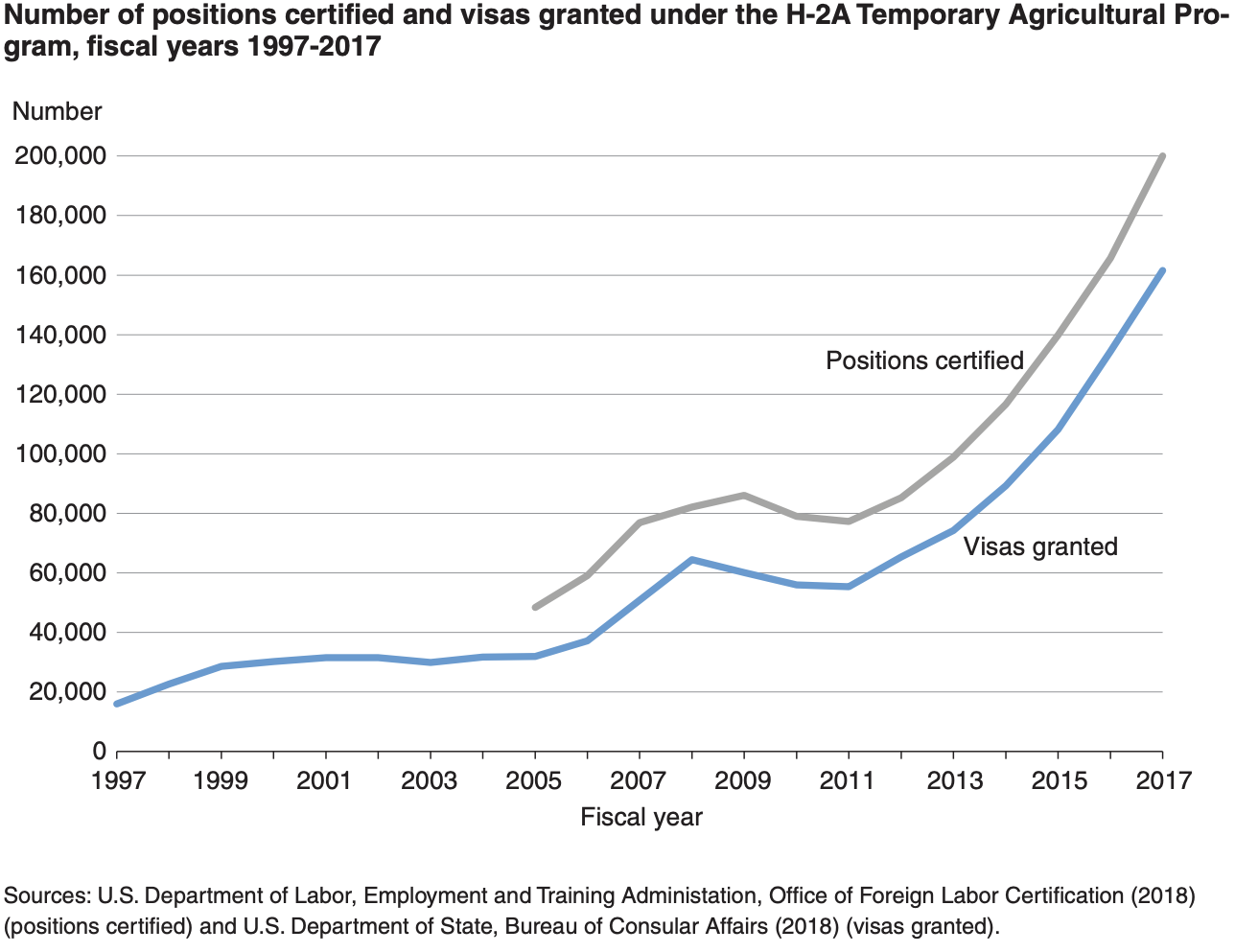
A study by Texas A&M conducted in 2015 found 51 percent of all dairy laborers are foreign-born, and dairies that employ immigrant labor supplied more than 79 percent of the nation’s milk supply.
“Dairy farmers are not going out of business because of a lack of workers, but they are not expanding because of the difficulty in finding labor,” says Jaime Castaneda, senior vice president of policy, strategy, and international trade for the National Milk Producers Federation.
Enforcement of current immigration law has only added to the difficulty in finding and keeping farm laborers, and the issue reaches across sectors and farm size. “If you are a farmer with a significant amount of labor, or a small farmer with one laborer, and something happens to those people, you run into trouble,” says Castaneda. He adds that dairy farmers, while concerned about enforcement, aren’t opposed to enforcement as long as there is meaningful reform and a supply of workers.
Some foreign-born farm laborers with documentation issues have been on the same farm for more than a decade, according to sources.
“We have a very nervous agricultural community. As fear of enforcement gets worse, the nervousness also gets worse...Rumors of enforcement, threats of enforcement are creating a nervous atmosphere,” says Chuck Connor, CEO of National Council of Farmer Cooperatives and chair of AWC.
Regardless of whether food is produced here or in other countries, Connor notes the chance that food will be handled by a foreign-born worker is extremely high. He argues that buying products grown in the United States rather than in another country—when both have been handled by foreign-born workers—is best for both U.S. consumers and U.S. farmers and necessary to keep U.S. agriculture competitive.
Sources note that despite the best efforts of farm interests and Congress, the worker shortage is getting worse. “If this problem doesn’t get solved, the price of strawberries and other produce in grocery stores will go up tremendously,” says Bissett. “If the problem isn’t solved, fresh fruits and vegetables will become a luxury item in this country.”
The Policy Conundrum
One of the best ways to stem the worker shortage going forward would be to enact meaningful immigration reform ensuring a steady supply of farmworkers. AWC’s position—framed as the unified voice of agriculture—is two-pronged.
First, the coalition wants reform of the burdensome H-2A visa program, which allows seasonal foreign-born workers into the United States temporarily. Second, the group believes a legislative solution is needed that provides stability in the ag labor force by providing legal status for the unauthorized, but experienced, agricultural workforce currently in the United States, ensuring future demand for ag workers is met.
Last year, two immigration reform bills were introduced by Republicans in the House of Representatives, but both failed to pass the full chamber. The one that came closest to meeting the needs of agriculture was introduced by then Chair of the Judiciary Committee Rep. Bob Goodlatte, R.-Va. He believes meaningful immigration reform needs to address both of the areas on AWC’s wish list as well as improved enforcement, both at the border and in the interior of the country.
“The H-2A program needs to be replaced by something that works better for American agriculture, and frankly for the workers as well, or at the very least the program needs a major overhaul,” Goodlatte said in a recent interview with Agri-Pulse. “The other issue is: What do you do with people who are not lawfully present in the United States? The bill that I worked on with so many other members of congress, mainly Republicans, in regard to the border issue, addressed all three of those issues, but by no means was it comprehensive. I’m not even sure I would call it very broad.”

Former Rep. Bob Goodlatte, R-Va.
While some in agriculture were in favor of moving the Goodlatte bill forward, the California Farm Bureau successfully objected to provisions that would have capped agricultural work visas, mandated companies confirm the legal status of their foreign-born employees using the government’s online E-Verify system, and required existing workers illegally in the United States to return to their country of origin before they could reenter the United States on agricultural work visas.
Others were opposed to mandating the use of E-Verify. “The position we take on E-Verify is that we know our farms and ranches today have a tremendous labor problem. And we know that a lot of the workers on those farms and ranches have a documentation problem,” notes Connor. “We don’t need a system to tell us that. We need a system that provides those workers with a path to legal status.”
In mid-January, Rep. Zoe Lofgren, D-CA, and Senate Judiciary Committee Ranking Member Dianne Feinstein, D-CA, introduced bicameral immigration bills that work to provide farmers with access to a legal workforce. A throwback to former President Ronald Reagan’s days, the bill would provide a blue card to undocumented farmworkers. Once a blue card holder has worked a specified number of days in agriculture, they could apply to become lawful residents and obtain a green card, allowing them to work in other industries.
Critics to the concept say workers would use ag as a stepping stone, and thus the blue card does little to supply a dedicated future ag workforce.
The race to develop machine workers
With immigration reform gridlocked, farms have started to adopt new mechanization technologies to help fill the labor shortage gap. Technologies that reduce the need for workers or make it easier for older workers to remain on the job by easing the physical demands of their labor appear to be promising for some sectors, but they are not without problems.
“Research and development of new technologies is often expensive and slow to reach fruition, and the costs of adopting a new technology—including costs of capital and of learning and acquiring the appropriate skills—are usually substantial,” according to ERS. Mechanization often requires changing to new crop varieties and adopting new cultural practices and harvesting methods. Quality of the resulting product can also be reduced.
Slaughter says that U.S. agriculture is just starting the process of robotic mechanization.
“It’s spotty. In dairy, robotic milkers have been around for a while, especially in Europe, but it has been a gradual change,” he said. “There is a need—a market—for robotic milkers. In other areas, we are further away.”
Sometimes a market is too small to attract research and development investment, while in other cases, technology lags. “A lot of progress is being made in fruit harvesting,” Slaughter added.
For example, in Washington’s Yakima Valley, some growers are using hedge-row pruning of trees. Vision technology has difficulty recognizing trees, which are large-diameter, 3-D objects, with open structures—unlike buildings, which are boxy and established.
“For a robot to get into the inner space of a tree and find fruit is more complex,” Slaughter said. “If you make the orchard a hedge-like structure, still tall but narrow, the robot only needs to reach in 6-12 inches instead of 2-4 feet. It can more easily see and reach the fruit, and it is more likely the robots will be successful.”
However, changing the structure of an orchard requires a long-term commitment from growers in order for manufacturers to be willing to invest.
Due to the size of some of the smaller labor-intensive crop sectors, many of the companies working on new technologies that show promise for further mechanizing these industries are being developed at universities or by technology firms, not large equipment manufacturers. However, even large equipment manufacturers and agribusinesses are staking a claim in these technologies through acquisition and collaboration.
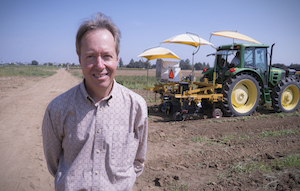
David Slaughter, UC Davis
In September 2018, Deere and Company acquired Blue River Technology, a firm that has designed and integrated computer vision and machine learning technology that will one day enable growers to reduce herbicide use by spraying weeds directly, not entire fields. Then in December 2018, Deere announced the launch of the Startup Collaborator project to work with start-up firms that want to work with Deere to test innovative technologies in real-world environments.
Cargill also announced a strategic investment last year in Cainthus, a machine vision company based in Dublin, Ireland. The company’s breakthrough predictive imaging is used to identify individual dairy cows based on facial recognition and hide patterns. The system can track and analyze food and water intake and detect heat and behavior patterns, which can drive on-farm decisions that affect overall health, reproduction management, and milk production.
Nate Dorsey, an agronomist for RDO Equipment Co, in Yuma, Arizona, who consults with growers on adoption of precision agriculture, says that getting laborers to work in the field is difficult.
“Fewer people are available,” he says. “And it is really hard work; people are unwilling to do it.”
Within the last year, Dorsey has seen a spike in interest in automation technologies, particularly in California and Arizona, where there is heavy reliance on field labor. “With corn and soybeans, there is not as much labor requirement, whereas in the Southwest, lettuce, peppers, strawberries are very labor intensive—a lot of what’s done is done by hand, thinning plants, transplanting plants, harvesting,” he adds.
For the past six years, Vision Robotics has been selling a lettuce thinner robot that uses vision and spraying technologies. Pulled by a planter, the robot counts lettuce plants, then sprays a killing dose of fertilizer on unneeded plants.
One of the firm’s founders, Tony Koselka, estimates that about half of the nation’s big lettuce farms, mostly in California and Arizona, use some type of mechanized lettuce thinner, while some of the other farms are experimenting with mechanized tape planting technology to ensure the crop is not overplanted.
“The reason people are adopting the technology is they can’t find the labor,” Koselka said. "A typical lettuce thinner can replace a hand crew of 20-30 people and costs $100,000 to $300,000-plus.”
In this case, automation reduces the need for labor to two people, one walking behind the robot, and one operating the robot. If the technology is used efficiently, Koselka says “it can pay for itself in a matter of months. If the lettuce farms were to use thinners 24-7 efficiently, the world would need 40 to 50 of them.” Taking inefficiencies into account, he estimates the global market would require a couple hundred thinners.
With a market that small and several firms competing in the space, at first glance it appears futile for a company to invest time and money into the market if it wants to remain viable. But Koselka says lettuce thinners have been a good first step toward developing other robotic products for much larger agricultural markets.
Currently, his firm is developing a mechanical weeder, using technologies similar to those used in the firm’s lettuce thinner, that is close to being commercialized. Vision Robotics is also working on more complex technologies, including a grape-vine pruner.
The market for robotic strawberry pickers is larger than the lettuce thinner market, and adoption could occur faster because Harvest CROO plans to offer robots as a service, and 70 percent of U.S. strawberry growers are investors in the company.
“As soon as we can prove it works, our growers are telling us they will take our service as fast as we can deliver,” Bissett said. “We believe it is a good business in and of itself. The fresh strawberry market in the United States is $3 billion. It’s a market conducive to robots.” Full commercialization of Harvest CROO’s strawberry picker is scheduled for 2022.
With more than 38,000 acres of strawberries in the United States – about 88 percent of which are in California with the rest in Florida, according to the California Strawberry Commission – Bissett says to harvest all of the strawberries in the United States, his firm would need 2,000 harvesters each with 16 robots. One harvester can do the work of 30 human pickers at a rate of 8 acres per day, picking one plant every 8 seconds. In addition, Mexico has 20,000 acres of strawberries to target with his service.
Chinmay Soman, CEO and cofounder of EarthSense, helped develop a robot called TerraSentia, while at the University of Illinois in 2017. Last year, the firm was beta testing 25 robots. “We are working with early-stage applications,” Soman says, such as crop breeding and field scouting. EarthSense hopes to conduct field-scale pilots this year with the robot for crop scouting, and then in 2020, the firm hopes to have a limited commercial release. Each robot is expected to eventually sell for about $5,000. “We want the robots to be as affordable as professional-grade drones,” he says.
Today’s shortage of agronomists means scouting occurs sporadically, with perhaps only 2-5 percent of the field scouted, Soman notes. “When you miss the early stage of a disease, it can be difficult for the crop to recover.”
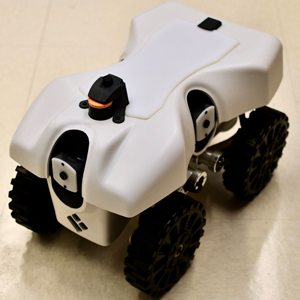
2019 model TerraSentia
To fill the shortage, TerraSentia will roll through entire fields underneath the crop canopy taking videos for computer analysis to determine recommendations for fertilizers, pesticides, and herbicides.
The robot’s ultimate long-term application, which is still about two to three years out, is weed control. “Because weeds are becoming herbicide resistant, growers are looking for laborers to walk the field and pull weeds. That gets expensive, but ultimately, they can’t find the people to do that,” notes Soman. “This will kill weeds without using chemicals. We are working with weed scientists and organic growers to come up with a possible mechanism to kill weeds when they are small.”
Aside from the row crop sector, drones are also being studied for their applications on ranches. Jimmy Doyle, an extension agent for South Dakota State University, says someday they could be used to monitor large tracts of rangeland and pastureland, water tanks, and animal counts.
“It can really shorten the labor requirements on the rangeland and pasture monitoring side,” Doyle said. While ranchers typically don’t need as much hired help as other sectors of agriculture, the labor shortage has hit them as well, Doyle noted. “If a ranch is now spending a couple of hours a day looking for strays, or checking water tanks, they could put more energy into work that impacts their bottom line”—and pay higher wages to retain more qualified workers if drones are adopted.
Farmers will also likely need to adopt technological innovations that fall short of full mechanization to increase productivity and reduce the physical burdens on farmworkers, according to ERS.
“Such changes permit farmworkers to remain productive at more advanced ages and expand the scope of employment for female farmworkers. Examples of these less mechanized but still significant advances include replacement of ladders in fruit orchards with hydraulic platforms and reduction of the distance that harvested produce needs to be carried by hand by using mobile conveyor belts.”
Will new technologies replace foreign-born labor?
No doubt, new technologies will be needed, developed, and adopted in order for U.S. agriculture to remain competitive well into the future, but they are unlikely to completely replace the need for foreign-born workers. According to a University of California report, Harvest mechanization helps agriculture remain competitive, adopting mechanization can:
- Reduce costs per unit
- Contribute to the ability to expand total production volumes
- Provide a reliable, cost-effective replacement for the diminishing labor pool
For instance, tomatoes used for processing have been mechanically harvested since 1962. Following the end of the Bracero program in 1964, which dramatically reduced the labor supply, “262 harvesters came into commercial use the following season, harvesting 25 percent of the crop. Four years later, 95 percent of the crop was harvested by machine,” allowing farmers to hire fewer workers at higher wages, according to the University of California report.
Eventually, though, as growers and other ag sectors become more efficient and productive through the use of the new technology, the need for workers expands, Slaughter notes. Thus, while automation can reduce the need for labor, historically the reduction has proven somewhat temporary.
Will immigration reform solve the labor issue?
Unfortunately, for U.S. agriculture, as demand for U.S. farm labor has increased, agricultural employment in Mexico has also increased, from about 6 million workers in 2011 to 7 million in 2017, according to ERS. In part, the change reflects the expansion of labor-intensive fruit, vegetable, and tree nut production in Mexico, some of which is destined for U.S. grocery stores.
“A major change in Mexican agriculture since the turn of the 21st Century has been the expansion of fruit, vegetable, and tree nut production—the same sectors in which U.S. growers traditionally have relied on foreign-born labor. Between 2000 and 2016, Mexican production of these commodities increased from about 27 million metric tons to 40 million metric tons—an increase of 47 percent,” according to ERS.
Moreover, agricultural employers in Mexico are not only competing with the United States for farmworkers, they are also competing with Mexico’s industrial and service sectors.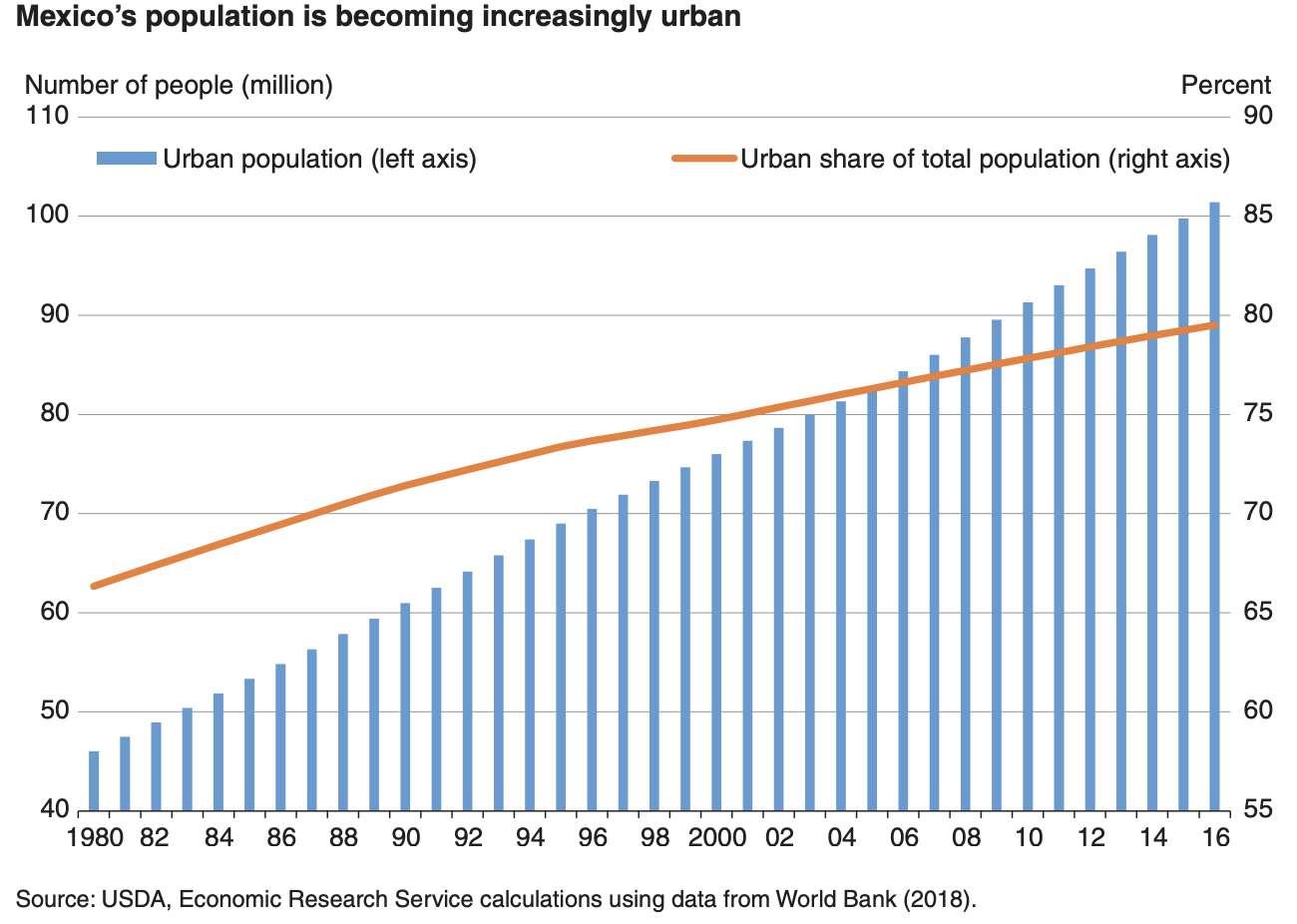
“The declining farm labor supply in Mexico suggests that securing more guest workers from rural Mexico will not adequately fill U.S. agriculture’s long-run labor needs. Looking farther south for guest workers would also involve challenges. The rural population of Central America is smaller than that of Mexico (19 million for Belize, Costa Rica, El Salvador, Guatemala, Honduras, Nicaragua, and Panama combined, versus 26 million for Mexico, according to 2017 data from the World Bank),” ERS states.
In short, U.S. agriculture could find it difficult to offset the decreased supply of farm labor from Mexico with workers from other countries, for the following reasons, ERS notes:
- The United States will have to compete with Mexico and other countries in the Americas that are also expanding agricultural production and recruiting farmworkers.
- Recruiting from countries more distant than Mexico may be costlier.
- Many of the factors that pull Mexicans out of farm work—such as rising education levels and a growing service economy—are also at play in other developing countries.
A combination of solutions likely
Most likely a combination of factors will need to play out to keep U.S. farms operating. “If the government lets more people into the country, it might slow the rate of robotic development, but they can’t let enough people in to solve the problem,” Bissett says. “The bodies just aren’t there.”
Short-term, an expanded agricultural guest worker program could help U.S. farmers compete with Mexican farms to attract workers.
“However—given the apparent long-term decline in the U.S. farm labor supply and the various structural changes occurring in the Mexican economy—investments in less labor-intensive technologies, more efficient labor management practices, and a move away from the most labor-intensive crops may be more viable long-run strategies for U.S. agricultural employers,” ERS concludes.
Who will be the farmer of the future?
by Sara Wyant
For decades, policymakers have tried to ensure that small and medium-sized farms have a chance to not only survive, but thrive. Yet, with labor, financial and other challenges, farms have continued to consolidate in the U.S. with 15 percent of the crop farms controlling 80 percent of the output.
Why have farms in the middle continued to decline in number? New research indicates that some of the most important indicators of farm financial success may not be the size of the farm, but the personality type, skill sets and ambition of the operator.
Over the last year, Aimpoint Research has worked to identify who will be the farmer of the future by analyzing industry trends, in-depth surveys back to 2002, in-person farmer focus groups, psychographic and attitudinal feedback and wargaming exercises.
“As the agriculture industry continues to transform, we set out to answer two very important questions with our research. Who are farmers of the future and what will they require of us?” explains Brett Sciotto, CEO of Aimpoint Research, a global marketing research and competitive intelligence firm.

Aimpoint Research CEO Brett Sciotto
Through extensive psychographic segmentation, Aimpoint Research identified five farmer profiles that exist today, and the characteristics that set them apart.
“We thought it was important to look at both internal and external factors impacting the farmers of the future because both play a role in determining future success,” says Sciotto. “Some farmers think success is almost entirely dictated by external factors like commodity prices and government regulations while others told us they were going to succeed no matter what was thrown at them.”
Sciotto described the 5 farmer profiles and their different characteristics:
Independent Elites: Representing about 20 percent of the grower universe, they are growth-oriented and “have largely made it to the top of the mountain.” Their growth orientation is very high, business IQ is above average and financial health is above average. They tend to be more optimistic about agriculture and they don’t see as much importance in safety nets and farm bill programs. They are long-term, business-focused planners and over half expanded their operations over the last couple of years. Nearly 51 percent have succession plans in place, while 39 percent have bachelor’s degrees. This group tends to be financially sound. They can afford and are earlier adopters of technology. They believe they can profit no matter what the commodity prices or what the government may throw at them. They tend to be pretty independent. They are consistent and reliable and at the top of their game.
Enterprising Business Builders: They represent about 21 percent of the growers surveyed and have the highest priority on growth out of all five groups. They are the least traditional and the least change-resistant. With a keen focus on growth, they are willing to try whatever it takes so they are climbing up that mountain as fast as they can. This group is highest in business IQ, they are sophisticated marketers, financially healthy and off the charts in their willingness to innovate and adopt new technology. Sixty-four percent of these operations grew over the last five years. These operatives are highly collaborative and more willing to conduct business online.
Classic Practitioners: This group, representing 24 percent of the growers surveyed, still want to grow and be successful, but they are struggling. They have become somewhat negative. They believe success is not fully in their control. They tend to be more traditional, rely more on safety nets and farm bill programs. They lack some of the business IQ to get to the next level. They tend to save money rather than invest money. They are slower to adopt technology and management practices. They want to grow but they lack some of the fundamentals to adapt in a changing environment. They are the most loyal to their suppliers of any group. They like the practice of farming more than the business of farming. This is where you start to see a real shift in mindset compared to the first two groups who believe they can be successful no matter what commodity prices are.
Self-reliant Traditionalists: This group has been through the ups and downs of the farm economy before and are just trying to hold on to what they have. Representing 22 percent of the survey sample, they’ve saved a lot of money and tend to be cash-funded. They are short-term thinkers, not planners. They’ve kind of given up on the idea of expanding their operation. They’ve been through tough times before and think they’ll survive it again. These tend to be smaller operations and the owner/operators are less educated. They do not value technology or innovation.
Leveraged Lifestylers: They think they’ve done everything right and the world is stacked against them. Representing about 14 percent of the grower universe, they are just trying to survive and think their profitability is completely tied to markets recovering and government reducing regulations and providing more supports for them. They tend to love the lifestyle of farming but not really have the business sense to navigate it. They have all the latest and greatest stuff, which adds to the financial pressure. They tend to be short-term thinkers, impulsive decisionmakers, and are skeptical of the industry. They recognize that they are likely to fail if they don’t change, but they don’t really know how to do it. This group is the most vulnerable, Sciotto adds.
Determining who is most likely to succeed in the future goes beyond simply understanding the profiles of today’s farmers, according to Sciotto.
“Aimpoint Research, along with a collaborative group of clients and ag industry leaders, looked to the future through wargaming exercises. Through the wargaming, we were able to predict the conditions most likely to define agriculture in the future, and in turn, match the farmer segments with the traits needed to successfully navigate those industry shifts,” explains Sciotto.
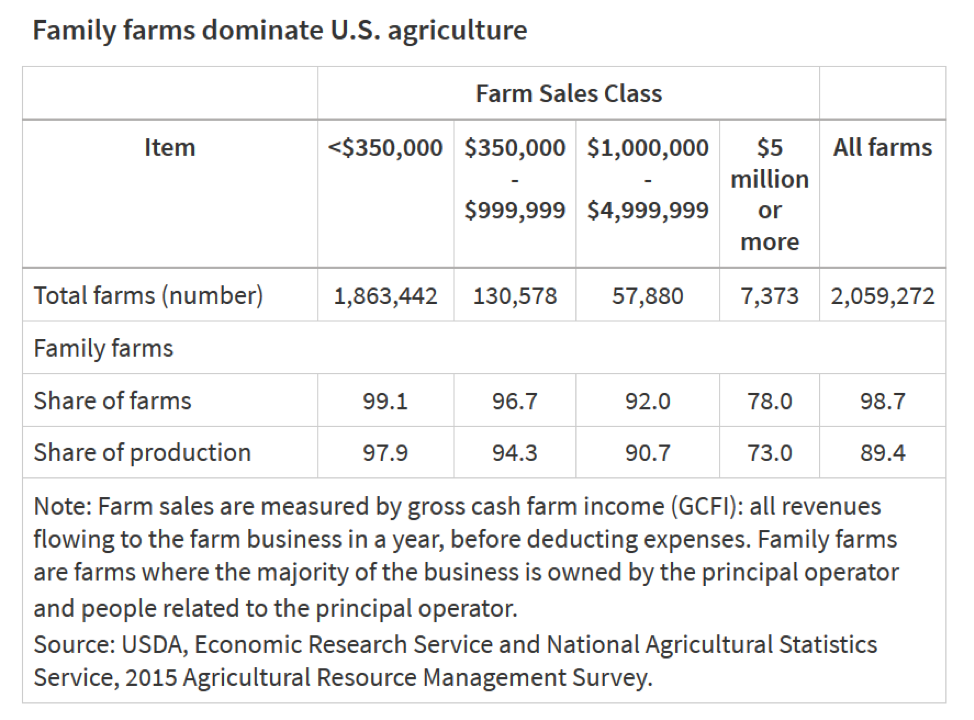 Essentially, the top two personalities out of these five are seeing the most success, Sciotto says.
Essentially, the top two personalities out of these five are seeing the most success, Sciotto says.
“When we think about the grower segments of today, who is having the most success and the attributes that will be required in 2040, it becomes very clear who will be the farmers of the future. The differentiators really boil down to business IQ, adaptability, drive to succeed, collaboration and willingness to sacrifice some independence. When we look at the five farmer segments and the groups that embody those traits, the Enterprising Business Builders are most likely to lead the industry, with the Independent Elites continuing to find success,” says Sciotto.
He believes that when you couple the psychological differences they identified with a look at some of the changing dynamics in food and agriculture, it’s easier to see why not only growers but their trade associations, checkoff boards and supply chains will need to change, too.
“We have to acknowledge as an industry that we are going to serve a bifurcated market. We are going to have large, sophisticated vertically-integrated operations run by high business IQ farmers and we are also going to have small, direct-to-consumer operations serving their niche.”
“From this day forward, supply chains will want to differentiate. They will cater to consumers and will ensure that the entire supply chain meets certain standards that can back up their marketing claims. This is where transparency and traceability - all the way from the farm and through the process of bringing a product to a consumer - is only going to put additional demands on agriculture,” Sciotto adds.
“We see retailers and food companies wanting to work with as few food producers as they can. They will want to work with larger operations because ultimately, it reduces their risk. And it reduces the threat to ensuring that they can make a claim in their product marketing. Farmers of the future must build a collaborative relationship with the supply chain they want to serve.
“If you want to be a producer who can sell into these supply chains at a premium then you are going to have to adapt and grow to scale, otherwise you will be left behind.”
Sciotto says agribusinesses who serve traditional agriculture will have to move faster and add value in new ways.
“The concept of one-size-fits-all is fading in farm channels. The farms of the future will be diverse, have different needs and will look to their vendors and suppliers to provide tailored solutions and to be constantly innovating.”
For more news, go to www.Agri-Pulse.com.

